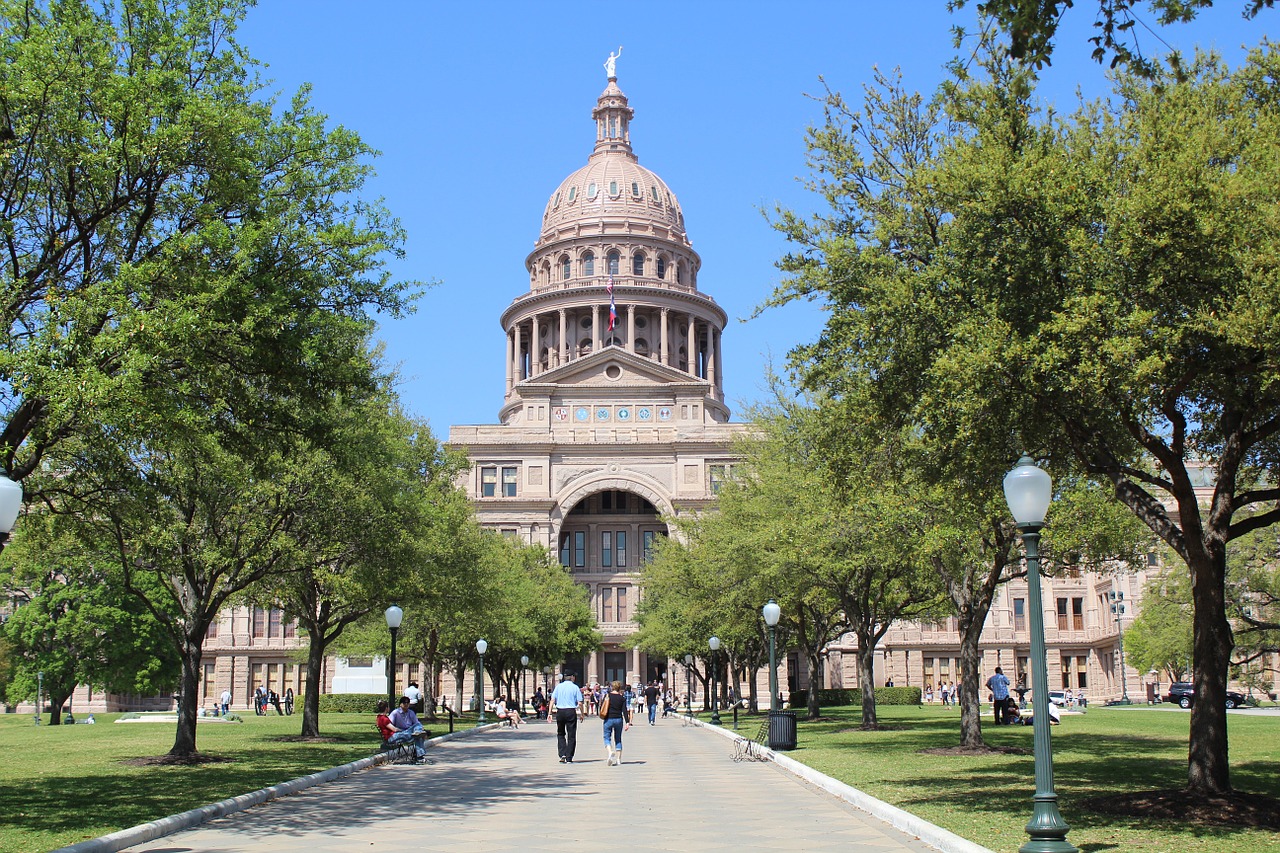Texas
Texas law requiring age-verification measures for pornography sites unconstitutional, judge rules

A federal judge on Thursday temporarily blocked Texas from enforcing a law requiring pornography sites to implement age-verification measures, after finding the law unconstitutional.
U.S. District Judge David Alan Ezra found that the law, which was set to go into effect Friday, violates the First Amendment because it “substantially regulates protected speech, is severely underinclusive, and uses overly restrictive enforcement methods.”
The law requires pornography sites to use age-verification measures to determine visitors to the sites are at least 18 years old. It also requires them to post warnings about the alleged harms pornography causes.
However, the judge noted the law, which is meant to prevent children from accessing pornography online, likely will fall short of accomplishing its aims because it is “severely underinclusive.”
“It nominally attempts to prevent minors’ access to pornography, but contains substantial exemptions, including material most likely to serve as a gateway to pornography use,” Ezra wrote in Thursday’s order.
Ezra also noted content filtering is a less burdensome and more effective alternative to age-verification measures, which he said would deter “adults’ access to legal sexually explicit material, far beyond the interest of protecting minors.”
He pointed to privacy concerns associated with using government ID for age verification, one of two permissible mechanisms for verification under the law.
“People will be particularly concerned about accessing controversial speech when the state government can log and track that access,” Ezra said.
“In effect, the law risks forcing individuals to divulge specific details of their sexuality to the state government to gain access to certain speech. Such restrictions have a substantial chilling effect,” he added.
Copyright 2023 Nexstar Media Inc. All rights reserved. This material may not be published, broadcast, rewritten, or redistributed.

Texas
Storm damage? Here’s how to access federal disaster aid in North Texas

FEMA representatives have been canvassing areas of Texas hammered by tornadoes and intense storms in recent weeks.
“We’re on the ground and we’re trying to meet people where they are,” said Nikki Gaskins Campbell, a FEMA spokesperson. “We have crews going door to door in the most affected areas to find out exactly what the needs are and to help them register if they in fact need to do so for disaster assistance.”
The storms triggered a federal disaster declaration, which unlocks FEMA programs designed to help state and local governments remove debris and repair infrastructure such as roads and bridges.
In designated counties, it also allows for “individual assistance” to help people get back on their feet.
Where are residents eligible for assistance ?
Disaster 4781 covers storm damage dating back to April 26 in more than 20 Texas counties, including Denton, Collin, Cooke, Montague and Henderson counties in North Texas.
Gov. Greg Abbott said Friday that his request for individual assistance for Austin, Coryell, Dallas, Ellis, Falls, Hockley, Kaufman, Leon, Navarro and Smith counties remains under FEMA review.
How should damage be reported?
The state encourages Texans to report storm damage using the Individual State of Texas Assessment Tool at damage.tdem.texas.gov. Those reports help determine whether areas meet the thresholds for federal disaster assistance.
As officials document damage, additional counties could be added to those eligible for assistance.
Anyone who suffered damage should document it by taking pictures, saving receipts and notifying their county emergency management officials.
What is eligible for reimbursement?
Residents can receive help repairing uninsured storm damage to their homes, and a host of other costs are potentially eligible for reimbursement through FEMA programs, from a chainsaw for tackling fallen trees to a generator to keep medical equipment running.
Individuals who qualify for FEMA assistance can get money for water, food, prescriptions, baby formula, diapers and other items.
FEMA also provides funding to pay for hotel rooms or cover rent if a disaster prevents someone from staying in their own home. Individuals can seek funding to cover child care expenses incurred because of a disaster and to repair or replace damaged vehicles.
The cost of moving and storing personal property to prevent further damage also can be covered.
What isn’t eligible?
Claims for damage involving primary residences are allowed, but vacation homes are not covered.
Damage covered by insurance also isn’t eligible for FEMA aid.
“Your insurance is always going to be your first line of defense,” Campbell said. “FEMA is not going to duplicate payments.”
FEMA has typically not covered the cost of spoiled food from a power outage, but there is assistance that can provide for essential needs such as food.
Like the IRS, any FEMA payments can be subject to an audit and lying on an application for assistance can bring consequences.
Manage expectations
Federal disaster assistance is designed to be supplemental, so applicants should manage expectations.
“We are here to assist survivors who live in those designated counties and suffered damage to their primary residence as a direct result of the storms,” Campbell said. “But FEMA assistance usually isn’t enough to make you whole.”
Grant amounts can vary widely, but the average is about $5,000 to $8,000. That money does not have to be repaid.
How do I register for assistance?
Affected residents can apply online at DisasterAssistance.gov, download the FEMA App for mobile devices or call the agency’s helpline at 800-621-3362.
“We just encourage people to get the ball rolling as quickly as possible so they can try to start the road to recovery and get back to some sense of normalcy,” Campbell said.
She said applicants will typically hear back within seven to 14 days, and a FEMA representative might visit the residence to document the damage.
Campbell urged people to beware of bad actors seeking to exploit a terrible situation. A FEMA representative isn’t going to ask for money, for example.
“We encourage people to be cautious,” Campbell said.
How fast can I get my money?
If all required information is submitted correctly, money can come through in a matter of days and be delivered via direct deposit or paper check.
Campbell said the goal is to act quickly.
“Our hearts and prayers certainly go out to all of those survivors who suffered huge losses in this disaster,” she said.
Texas
Notebook: Texas Longhorns Cruise Past Louisiana, Set Up Matchup With Rival Aggies

The Texas Longhorns (36-22) came into the College Station Regional as the No. 3 seed thanks to a disappointing showing in the Big 12 Tournament in Arlington. Going 0-2 did them no favors, and as a result, they were placed in a tough regional.
It didn’t get any easier when they drew the Louisiana Ragin’ Cajuns (40-19) as the No. 2 seed, featuring one of the best offenses in the nation. That didn’t faze them, though, as they came out and handled business in dominant fashion to the tune of a 12-5 blowout win.
Now here are three key takeaways from the Longhorns’ win over the Ragin’ Cajuns.
Grubbs delivered
Coming into Friday’s game against the Ragin’ Cajuns, the Longhorns sorely needed Grubbs to deliver a strong performance and shut down a potent lineup. Well, he did just that as he gave his team a much-needed solid outing. He gave up an early pair of solo home runs but buckled down after that.
Aside from those two mistake pitches, Grubbs only gave up two other runs in his five innings of work. Striking out four, the starter worked himself out of a couple of jams to leave in line for the win. And thanks to the offense’s performance, he got the win to push Texas into the winner’s bracket.
Offense showed out
Of course, it helps your starter when the offense takes them to an early 10-2 lead. That is exactly what the Longhorns did for Grubbs as they came out firing on all cylinders. Trailing 2-0 entering the fourth, they put up three runs to give Texas the lead.
The true show came one inning later in the fifth, however. Keeping the bats red hot, the Longhorns exploded for a whopping seven runs. Four of those came on one swing, with Jalin Flores launching a grand slam (his third of the season) to break the game open. They eventually tacked on two more runs, cruising to the 12-5 victory.
Saving Boehm
While the Longhorns have been inconsistent at times out of the bullpen this season, they have had a stable of reliable arms. Chief among them were Andre Duplantier II and Gage Boehm, with the former seeing action in the win over Louisiana. He gave Texas a solid 2.2 innings of shutout baseball, striking out four and giving up just one hit.
Meanwhile, Boehm was not needed in this win as it was never close after the fifth inning. For Texas, that is almost as big of a win as the win itself. A proven commodity in the later innings, Boehm’s ability to shut down opponents in tight games has been massive for the Longhorns.
Having him fresh if needed against Texas A&M on Saturday evening is a bonus for the Longhorns and something that could be the difference between a win and a loss.
What’s next for Texas?
After another strong showing in a regional opener under David Pierce, the Longhorns are in the winner’s bracket. They will take on the Texas A&M Aggies on Saturday night at 8 p.m. CT for a shot at the regional final.
Texas
Texas Supreme Court rejects challenge to state’s abortion laws

The Texas Supreme Court unanimously rejected a challenge to the state’s abortion laws Friday. The issue at hand was whether Texas’s civil abortion law prohibiting abortion unless a woman is facing a life threatening condition violated the state constitution.
The case, which is known as Zurawski v. Texas, was brought by 22 patients and physicians, represented by The Center for Reproductive Rights. Texas passed its abortion laws in 2021, and currently prohibits an abortion unless it is deemed life saving. The plaintiffs in this case, many whom women who suffered from serious complications during their pregnancy, and Dr. Damla Karsan, challenged the authority of the Human Life Protection Act. Under this act, a physician has the legal right to proceed with the abortion if the woman is suffering from a life threatening physical condition. Death does not have to be imminent, however. It has been argued that the medical exception to the law was unclear.
In the opinion presented by the court, Justice Bland did not grant much clarity,
Under the Human Life Protection Act, a woman with a life-threatening physical condition and her physician have the legal authority to proceed with an abortion to save the woman’s life or major bodily function, in the exercise of reasonable medical judgment and with the woman’s informed consent.
The Supreme Court ruled that Dr. Karson did not demonstrate that the Human Life Protection Act was narrower than the Texas Constitution. Therefore, they vacated the trial court’s order for an injunction on the law.
This case follows a case by Texas Supreme Court in late 2023. In this case, the Texas Supreme Court ruled that a woman who had been suffering from a non-viable pregnancy, was not eligible for the medical exception. After the plaintiff was in and out of the hospital, she ultimately went to another state to receive the abortion.
The opinion issued by the court has been criticized by supporters of abortion rights. Representative Colin Allred, who is also running for Senate, released a press release addressing the opinion:
To force someone to carry out a nonviable pregnancy – at risk to her own life – is outrageous. This decision allows Texas’ extreme abortion ban to continue to endanger women and deny them the health care they need. We are here because of Texas’ extreme abortion ban, which Ted Cruz proudly supports and called ‘perfectly reasonable.’
After Roe v. Wade, which guaranteed a federal right to an abortion, was overturned in 2022, multiple cases have arose concerning whether medical exceptions to abortion bans apply. While this is one of the first cases decided, many others are currently pending in several other states, as well as the US Supreme Court.
-

 World1 week ago
World1 week ago€440k frozen in Italy over suspect scam by fake farmers
-

 News1 week ago
News1 week agoRead the I.C.J. Ruling on Israel’s Rafah Offensive
-

 News1 week ago
News1 week agoBuy-now, pay-later returns and disputes are about to get federal oversight
-

 World1 week ago
World1 week agoOmbudsman probes Commission's senior staff 'revolving door'
-

 News1 week ago
News1 week agoVideo: Protesters Take Over U.C.L.A. Building
-
/cdn.vox-cdn.com/uploads/chorus_asset/file/25459708/Screenshot_2024_05_22_at_9.08.56_AM.png)
/cdn.vox-cdn.com/uploads/chorus_asset/file/25459708/Screenshot_2024_05_22_at_9.08.56_AM.png) Technology1 week ago
Technology1 week agoSuper Mario Maker 64 exists, thanks to a new ROM hack
-

 Politics1 week ago
Politics1 week agoFauci adviser's alleged destruction of COVID origin docs must be probed by AG: Rand Paul
-

 World1 week ago
World1 week agoHoping to pave pathway to peace, Norway to recognise Palestinian statehood




















